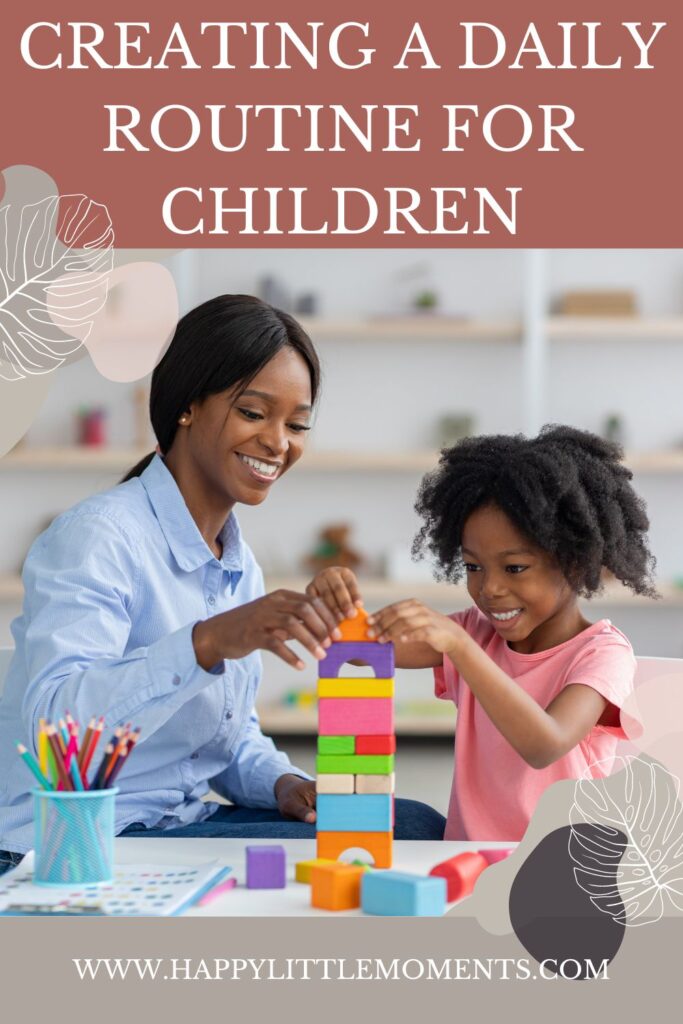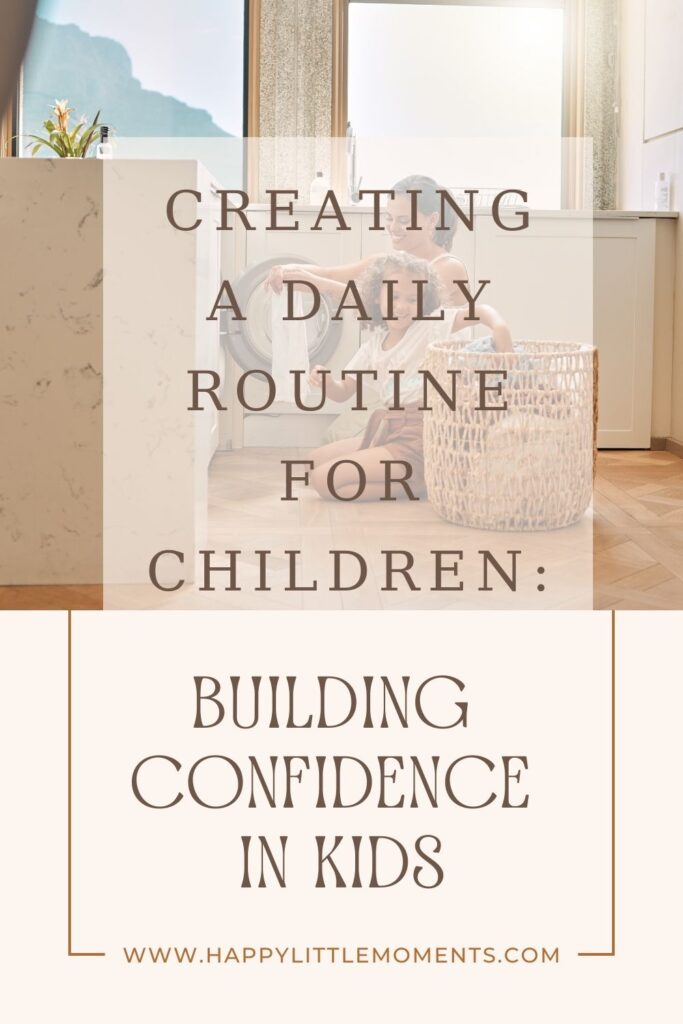Creating a daily Routine for children: Building Confidence in Kids
Honestly, I am not naturally a routine-loving person. Before I had kids, I secretly liked having a little chaos and unpredictability in my life. I was more of a “fly by the seat of my pants” kind of girl—before kids. At first, having a daily routine for our children was not high on my list of priorities.
After children, everything changed. Everything became less manageable once an extra little human was entirely reliant on us. And eventually, there were two little humans. And now there are three little humans that force me to lead an organized life.
Since I am not naturally a super organized or routine person (and neither is my husband), I initially found that creating a daily routine for our children was difficult to orchestrate. We had a routine but I have to admit that until a few months ago, it had been fairly loose. While we had an order to things and an approximate time when those activities happened, no matter how many times I’d say, “It’s 6:30 time for baths!” No one would listen to me. Not even me. I was simply shouting orders, and everyone was lax about following them.
why is having a Daily routine for children important?
Having a daily routine for your family can help you create boundaries for your children, help reduce your stress, and help your children have less anxiety about their day.
Additionally, a daily routine for children helps them develop good habits. Good habits help build your child’s identity, confidence, and character over time. Of course, we all want our children to develop positive self-identities while they are in our care. Having clear routines helps build good habits, consistency, and positive self-images early in their lives.
Routines are also empowering. Children are more independent and self-reliant because they can learn to do things on their own, like put on their own clothes and brush their teeth.

What happened when we changed our routine strategy?
Over time, I was getting tired of trying to “get everyone on a schedule.” I knew I had to change my strategy. So one evening, I took a Sharpie and a piece of construction paper, and I created a visual daily schedule everyone could see, and I taped it to the refrigerator. I didn’t create anything fancy, just a plain and simple schedule where everyone could see it.
I’m not sure why I hadn’t done it before. I had visual calendars for the month for my family and my planner is attached to me like glue. But I had always thought, surely, we didn’t need to see the activities we do everyday written down. Apparently, my family and I need to see our schedule written down to the last detail every day.
Perhaps I'm not the only one who missed the beauty of having a visual, daily routine for children...
I decided to blog about this topic because I‘m likely not the only one that missed having a daily visual for things that “should” be routine. Naively, I had assumed everyone else in my family knew the routine, and they were simply not following through. I thought my family wasn’t listening to me.
It turns out, I wasn’t communicating the routine in a way that made sense to my family.
I’ve heard often, “Write the vision and make it plain” many times before from Terri Savelle Foy. For years, I have managed myself with written and visual calendars, to-do lists, and goals. However, I had never realized it was also important to manage the details of my children’s daily routines in this way, too.
Maybe you think a visual daily routine for children is too simple to create order out of chaos, but it has worked phenomenally well for us. Now, there’s no questioning when we get up, when we play, when we get ready for school, when we do homework, when we play on electronics, or when we go to bed. It’s all right there, beautifully written out on the refrigerator.
To be clear, a very simple written schedule worked for us because my oldest child is old enough to read. My 4-year-old follows whatever his big sister does and the baby won’t know the difference until he’s a bit older.

A Daily Routine for small children
For smaller children, I suggest making a daily routine for your toddler or preschooler that includes pictures. Most child care centers use daily routines for children with pictures every day. Creating routines for kids through pictures helps even young children know what’s coming next all day long, reducing anxiety in many children. For example, child care centers have pictures for free play, fine motor play, recess, snack time, lunch, naptime, potty breaks, etc.
When my oldest child was a toddler, I half-heartedly tried to create a picture toddler routine for her. But instead of having the routine pictures where everyone could see them, I placed them in order in a basket. Since they were not in a place where we could easily see them, my husband and I forgot about them. I realize now, I needed to have it where we could all see the routine all of the time.
After realizing my past mistake, I recommend having your schedule hanging up where it’s visible, such as the refrigerator or a wall in the living room. Granted, it may not be the most aesthetic decoration in your house, but it’s worth the sacrifice. Your children aren’t little forever and sacrificing a little wall space for some sanity is worth the trade-off.
What if I'm not that creative?
If you’re not crafty or you don’t want to create a daily routine for your children with pictures, I got you. Click here for a FREE PDF of some schedules with pictures you can mix and match. Simply cut them out, laminate them, and attach magnetic strips to the back. Then post them in the order you want on your refrigerator. Alternatively, you can use Velcro and place them in order on a posterboard or a felt board. Then hang it somewhere visible in your house.
Once you have your schedule visible, stick to it firmly for at least a few weeks so everyone gets into their new routines. When everyone knows and understands the routines each day, you can have some flexibility in it now and then. I think it’s important to have a structure, but to also allow grace within the structure.
In conclusion, I hope this blog post inspires you to create or enhance a visual schedule for the unique needs of your family. Implementing a structured routine not only empowers your children with a clear sense of what lies ahead but also helps alleviate anxiety. By providing a roadmap for their daily lives, you are giving them the knowledge of what to expect, a sense of security, and a better sense of overall well-being.
Save this post for later! Click here to save to your Pinterest account. Follow me on Facebook, Instagram, and Pinterest for more great content!



